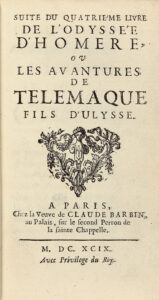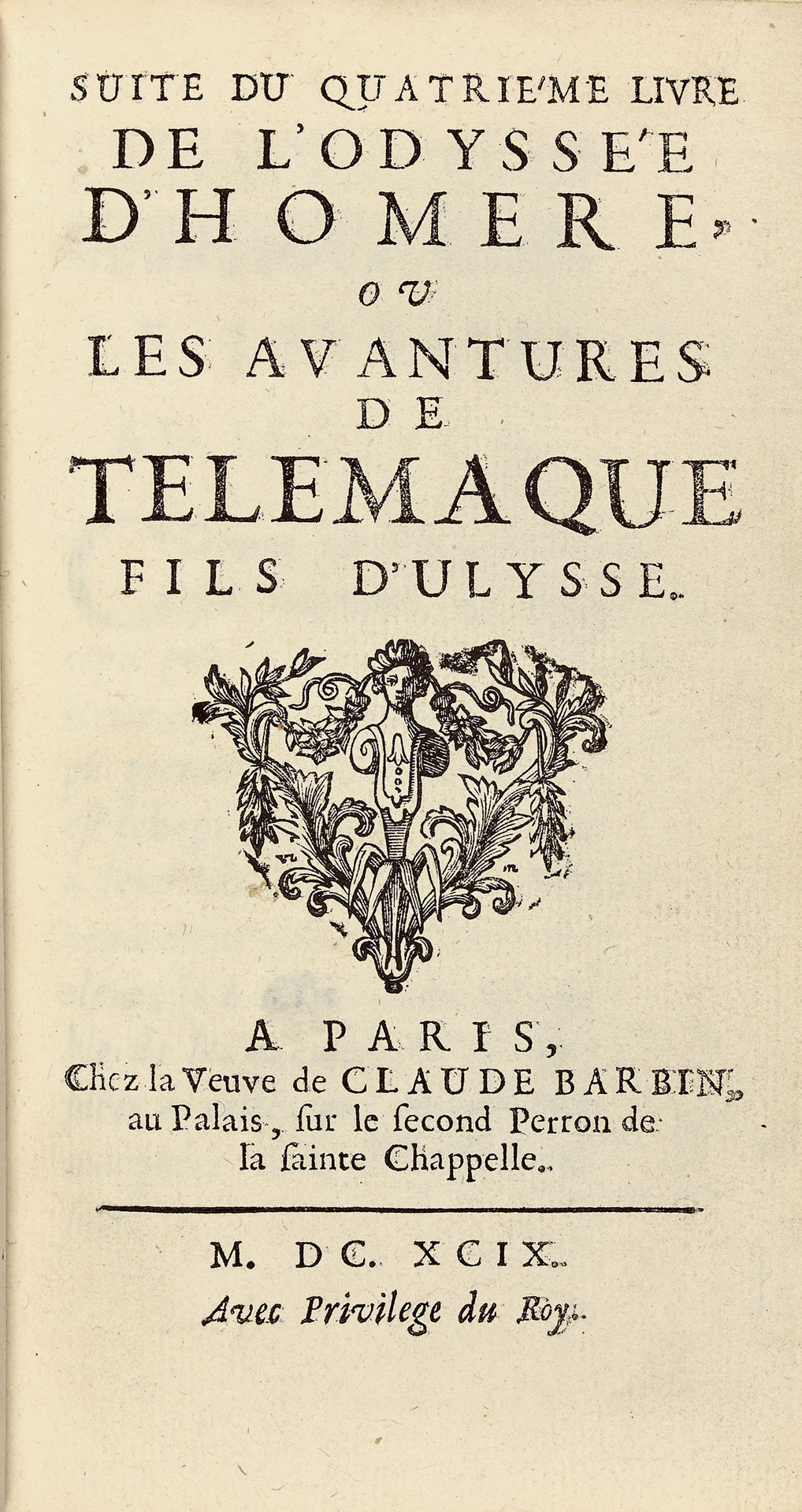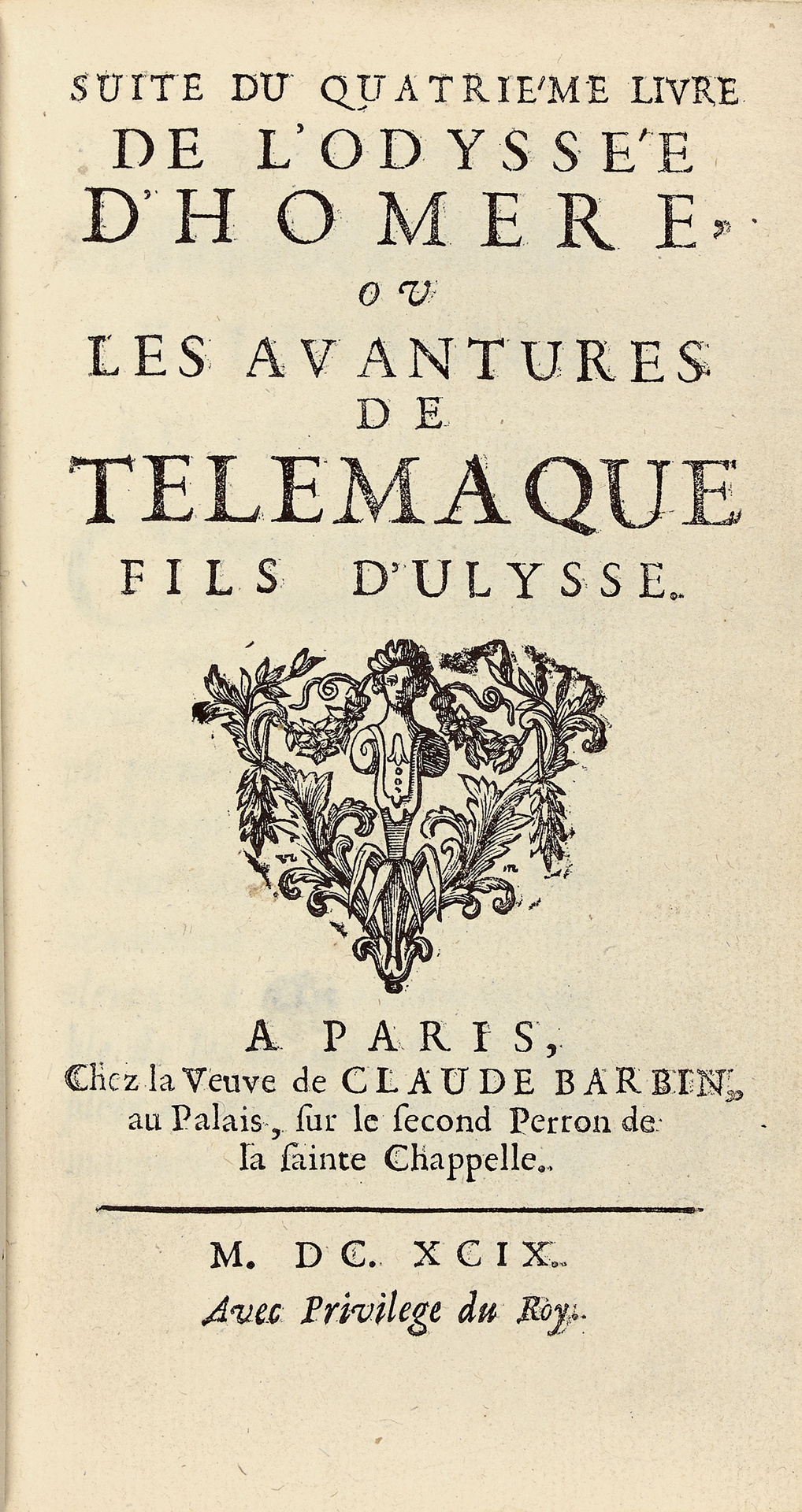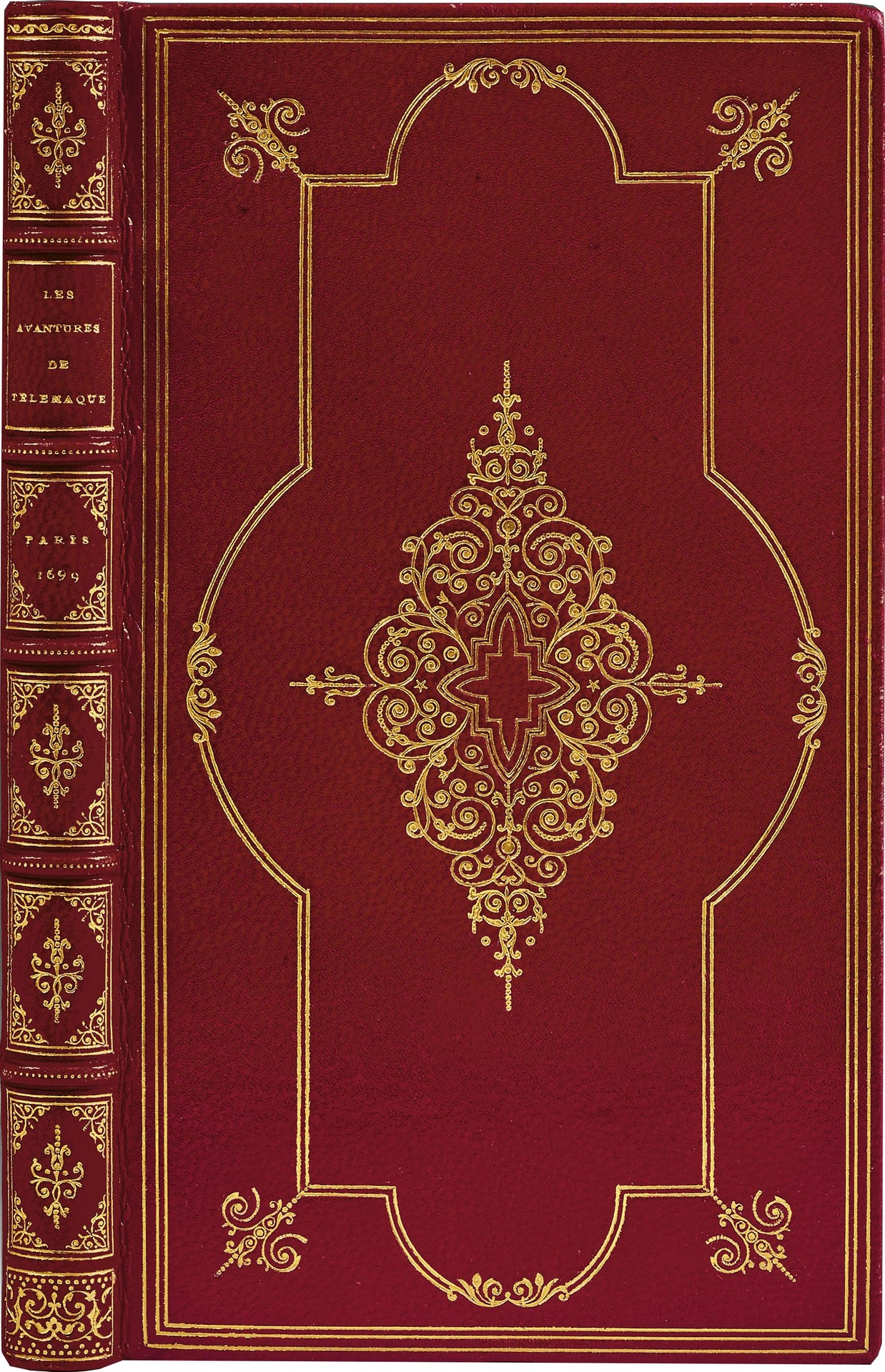A Paris, chez la veuve de Claude Barbin, 1699.
12mo [161 x 92 mm] of (4) ll. and 208 pp. with 23 lines per page.
Full red morocco, covers adorned with a large decor of gilt fillets and fleurons in the taste of the 17th century, lavishly decorated ribbed spine, red morocco doublure decorated with a large gilt lace, gilt marbled edges. Binding from the 19th century signed Hardy.
Extremely rare first edition, first issue, of the “Aventures de Télémaque” by Fenelon, one of the grêtest successes in classical age literature, printed in Paris in 1699 and censored by King Louis XIV.
The importance of this work is such that the general catalogue of printed material from the national library lists 230 copies printed between 1699 and 1930 in 15 different languages.
“We know that the first edition from 1699 is surreptitious. It is due to a betrayal. In a memorandum in his own handwriting, Fenelon explicitly declares: “Everybody knows that the text got away from me only because of one copyist’s infidelity/trêson…” This is enough to invite to see in the Avantures de Télémaque one of the most enigmatic works of our literature. Translated soon after in all languages, it had an enormous success and still today holds a renown that seems to defy time.” (Jacques Brosse).
“Published in Paris in 1699, the Avantures de Telemaque are an appropriate work in every sense of the word. Indeed, we know that, in 1689, Fenelon became the home tutor of the three sons of the Grand Dauphin. He mostly had to take care of the duke of Burgundy, the most difficult of them, who happened to be at the same time heir to the throne. It is from Homer’s Odyssey that he got his subject. Putting his trust in book fourth, he chose the hero most likely to interest his student: the young Telemachus, son of Ulysses, who is setting out on a perilous journey in order to find his father whose absence is about to cause serious disturbances in the rêlm.”(J. Brosse).
“The printing of the first fragment of this famous book was stopped as êrly as 1699 at page 208 by order of King Louis XIV” (Tchemerzine, III, 197).
Marguerite Haillant (En Français dans le texte) wrote a full-page study on this important work of our literature.
“Before this work was completed, censorship knew that the book was from Archbishop of Cambrai (after Mr de Bausset in his Histoire de Fénélon), the printing was forbidden while we were at page 208 of this first part. Moreover enemies of Fenelon who were getting nêr Louis XIV and who alrêdy succeeded in engendering disgrace to the author of the Maximes des Saints, succeeded in persuading the king that he should see in the Aventures de Télémaque a criticism about his own person and his reign, and êsily obtained the seizing of what had alrêdy been published. This is therefore only a fragment that, because of this interdiction, has become very rare. ” (Bibl. Nat. Y.) (Jules Le Petit).
“Fenelon was suspected of being up to no good : it was claimed at the Court that he satirized the king and his government, that besides, his book was a clues book and that he authorized himself to drew portraits from life: Mme de Montespan in Calypso; Mlle de Fontanges in Eucharis; Duchess of Burgundy in Antiope; Minister Louvois in Protésilas and Idoménée and last but not lêst Louis XIV. In his fury, the king then only saw Fenelon as an opponent of his glory”.
The first fragment of the Télémaque published in 1699 and stopped at page 208 has always been amongst the most precious books from the classical period.
Brunet wrote a detailed description of this very rare first issue of the first edition:
“Even if this first edition of Télémaque is lauded with the privilege of the king given to the Barbin widow, the printing was stopped on superior order while only 208 pages were printed, whose last one contains 24 lines and is ending with those words: ‘he (Idoménée) walks shakily towards the city while asking his son’. This first part is then only a fragment going through a third of the 5th book from the copies divided in 24 books. However, the interruption we just mentioned was only brief, and the rest of the work, composed of four new elements, has been published before the end of the yêr. But before describing this sequel we think we have to pause on the first part and on the more or less stêlthy reprintings that have been made.
The four preliminary ll. of the first edition contain a half-title: Les Avantures de Télémaque fils d’Ulysse’, a title; Le Libraire au lecteur, a notice complemented with an errata in ten lines; the Extrait du Privilège du Roy, dated April 6 1699. On the regular title we can rêd ‘Odicée’ until page 120; after this page and until page 168, ‘Odissée’, and then ‘Odyssée’. »
Precious and superb copy with very wide margins (height : 161 mm) coming from A. R Salem (ex-libris) and Edmée Maus (ex-libris) libraries.




